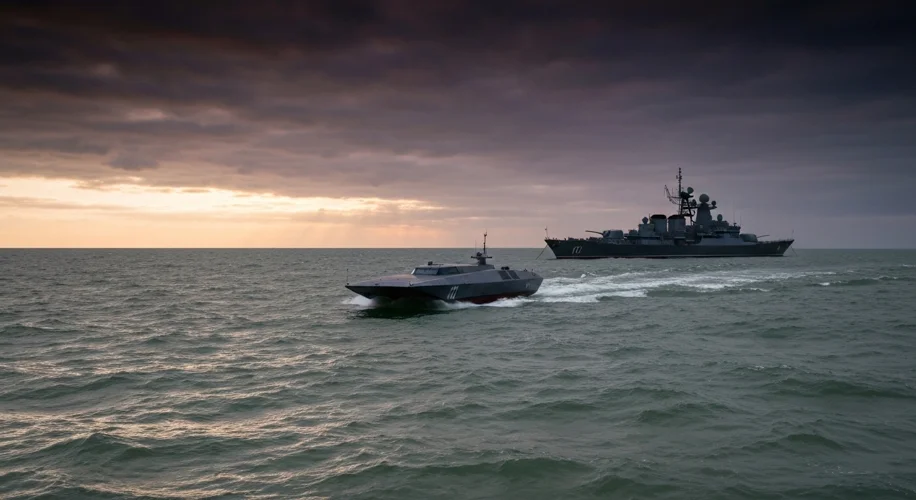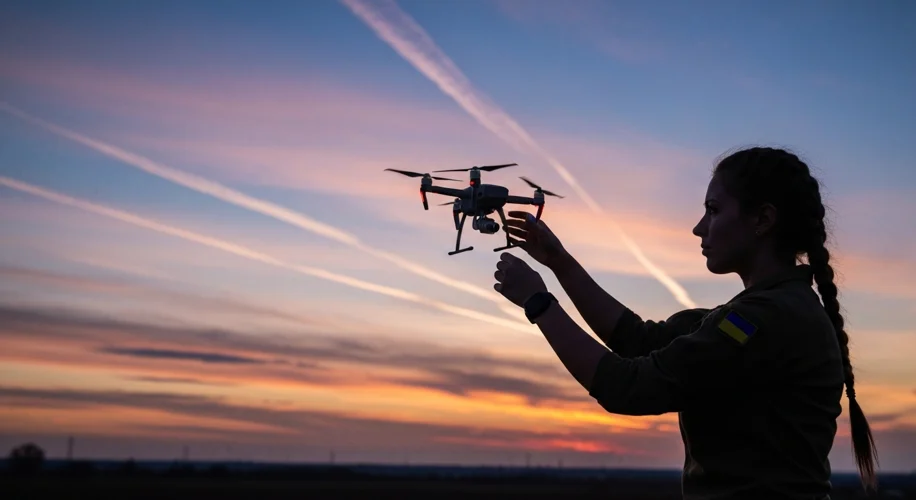The skies over battlefields have long been the domain of metal birds – bombers, fighters, and reconnaissance planes. But in the unfolding drama of modern conflict, a new, quieter hunter has emerged, one that blurs the lines between surveillance and strike: the unmanned aerial vehicle, or drone. While drone technology itself is not new, its application and evolution, particularly in the hands of Ukraine, have been nothing short of revolutionary, reshaping the very nature of warfare.
The genesis of aerial reconnaissance and attack can be traced back to the early 20th century, with balloons and fragile aircraft offering rudimentary eyes in the sky. World War I saw the tentative beginnings of aerial bombardment and observation. The interwar period and World War II witnessed a significant leap, with dedicated reconnaissance planes and the development of guided missiles, foreshadowing the autonomous capabilities of today’s drones. Yet, the true leap towards widespread, accessible drone warfare began in the late 20th and early 21st centuries, driven by advancements in computing, sensor technology, and miniaturization.
Initially, drones were largely the purview of major military powers, sophisticated and expensive platforms primarily used for intelligence, surveillance, and reconnaissance (ISR). The Predator and Global Hawk, for instance, became symbols of American air power in conflicts like Afghanistan and Iraq, capable of loitering for hours and relaying real-time video feeds, sometimes armed for targeted strikes. However, this was a top-down, technologically advanced approach.
The seismic shift began with the proliferation of smaller, more affordable, and commercially available drones. Companies like DJI, initially focused on civilian photography and videography, inadvertently created a dual-use technology that would prove invaluable to armies around the globe. These smaller drones, often quadcopters, could be deployed rapidly, offering invaluable battlefield awareness at a fraction of the cost of traditional aircraft.

Ukraine, facing a technologically superior adversary in Russia since the initial annexation of Crimea in 2014 and the subsequent full-scale invasion in 2022, found itself at the forefront of this new era. For Ukraine, drones were not a luxury; they were a necessity. With a significant disadvantage in air power and long-range artillery, Kyiv turned to the skies with ingenuity and relentless determination.
The Ukrainian approach has been characterized by a decentralized, adaptable, and highly innovative use of drone technology. Small, commercially available drones, often bought with crowdfunding or donated by citizens, were repurposed for a multitude of tasks. Soldiers on the ground learned to fly them, turning ordinary citizens into de facto drone operators. These drones, equipped with simple cameras, provided crucial battlefield intelligence, allowing Ukrainian forces to identify enemy positions, movements, and equipment.
But Ukraine didn’t stop at reconnaissance. They pushed the boundaries of what was thought possible with these small platforms. They began equipping them with explosives, transforming them into kamikaze drones or loitering munitions. Imagine a small, buzzing insect, carrying a small explosive charge, meticulously guided to a Russian tank, an artillery piece, or even a cluster of soldiers. These ‘FPV’ (first-person view) drones, controlled via goggles that transmit a live video feed, offer an unparalleled level of precision and a terrifyingly intimate form of warfare.

The impact of this drone swarm on the battlefield has been profound. Russia, initially reliant on its more traditional military hardware, found itself struggling to counter this pervasive, low-cost threat. Ukrainian drones have been instrumental in:
- Intelligence Gathering: Providing real-time battlefield awareness, identifying Russian troop concentrations, artillery positions, and supply lines.
- Targeting: Directing artillery fire with greater accuracy, minimizing collateral damage and maximizing effectiveness.
- Direct Strikes: Using kamikaze drones to destroy Russian armored vehicles, artillery systems, electronic warfare equipment, and even command posts.
- Psychological Warfare: The constant threat of an unseen aerial attacker has had a significant psychological impact on Russian forces, fostering a sense of vulnerability and paranoia.
The evolution of Ukrainian drone warfare also highlights a critical development: the adaptation of naval drones. These uncrewed surface vessels (USVs), often appearing as simple speedboats packed with explosives, have been used to devastating effect against Russia’s Black Sea Fleet. Attacks on flagship vessels, like the Moskva, have significantly degraded Russia’s naval capabilities in the region and forced a strategic re-evaluation of its naval presence.

These advancements are not without their challenges. Ukraine faces constant threats from Russian electronic warfare, attempts to jam drone signals, and sophisticated air defense systems. The sheer demand for drones also places immense pressure on Ukrainian industry and its international partners. Yet, the Ukrainian narrative is one of relentless innovation, adapting, and overcoming technological and logistical hurdles. It demonstrates that in modern warfare, asymmetrical advantages can be forged through creativity, determination, and the intelligent application of emerging technologies.
The story of Ukrainian drone warfare is more than just a military account; it’s a testament to human ingenuity in the face of overwhelming odds. It underscores how a seemingly simple technology, when wielded with skill and purpose, can fundamentally alter the course of a conflict. The

